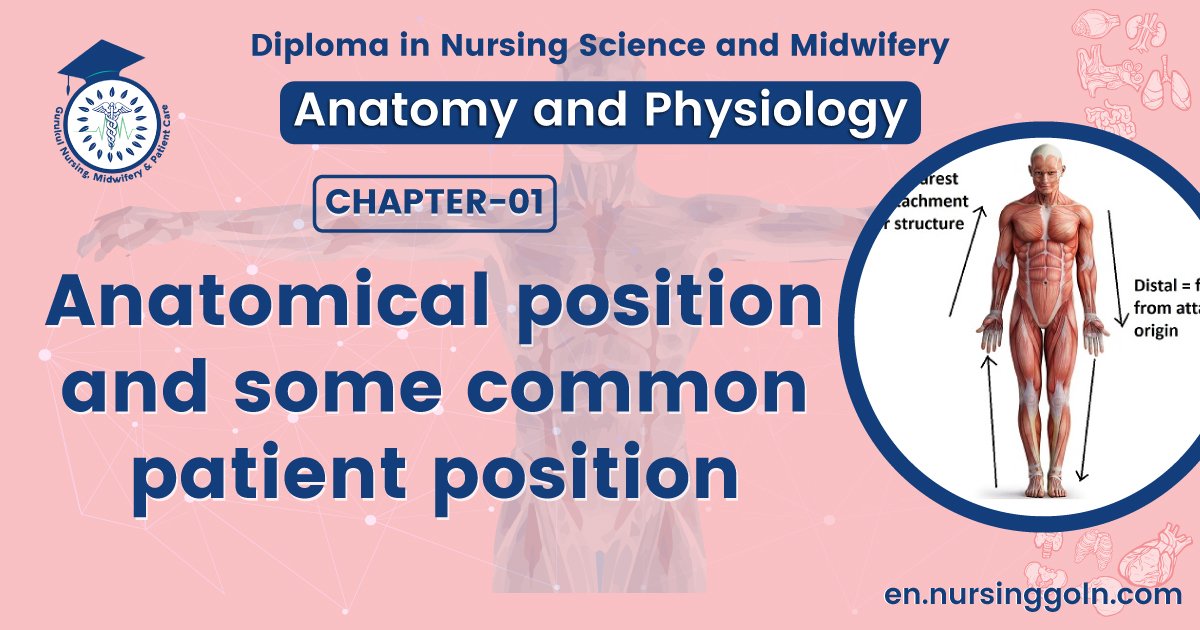Anatomical position and some common patient position-The course is designed for the basic understanding of anatomical structures and physiological functions of human body, musculoskeletal system, digestive system, respiratory system; cardiovascular system; urinary system, endocrine system, reproductive system, nervous system, hematologic system, sensory organs, integumentary system, and immune system. The aim of the course is to acquire knowledge and skills regarding anatomy and physiology.
Anatomical position and some common patient position
Anatomical Position:
This is the position assumed in all anatomical descriptions to ensure accuracy and consistency. The body is in the upright position with the head facing forwards, the arms at the sides with the palms of the hands facing forward and the feet together.
-(Ref: Ross & Wilson, ANATOMY & PHYSIOLOGY in Health and Iliness, 12 ed, P-46)
or,
Anatomical position is a position where the body is standing upright facing forward, palms facing forward with arms by the side and feet are placed together. (See the figure # 1.14)
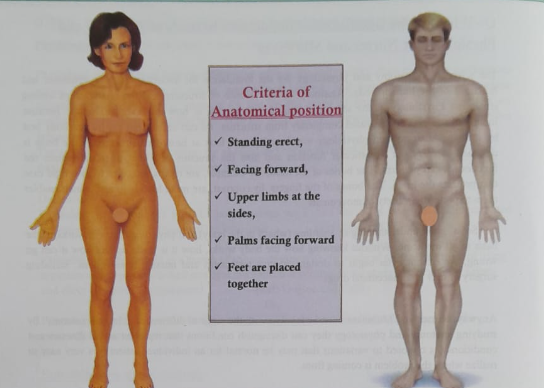
Patient positions
Positioning defined as placing the person in a proper body alignment for the purpose of preventive, promotive, curative, and rehabilitative aspects of health.
PURPOSE
- To provide comfort to the patient
- To relieve pressure on various parts
- To improve circulation
- To prevent formation of deformity
- To carry out investigations
- To perform surgical and medical investigations
- To prevent pressure sores
- To provide proper body alignment
- To conduct delivery/labor
- To carryout nursing interventions

Other important patient positions
Supine or Dorsal position:
In this position the body is lying down with face pointing upwards.
All the remaining positions are similar to anatomical position with the only difference of being in a horizontal plane rather than a vertical plane.
or,
Supine is a back-lying position similar to dorsal recumbent but the head and shoulders are not elevated.
Purpose:
- General examination.
- Abdominal surgery (Laparotomy)
- Surgery on head and extremities

Dorsal Recumbent position:
In dorsal recumbent or back-lying position, the client’s head and shoulders are slightly elevated on a small pillow.
Purpose:
- Rectal, vaginal and pelvic examinations and treatments
- Delivenes
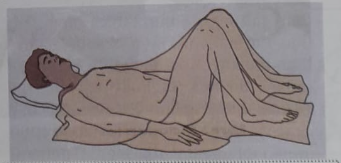
Prone position:
This is the position in which the back of the body is directed upwards. The body lies in a horizontal plane with face directed downwards. OR.
In prone position, the patient lies on the abdomen and chest with head turned to one side, the hips are not flexed. This is the only bed position that allows full extension of the hip and knee joints.
Purpose:
- For surgery or treatment on the back.
- To facilities drainage from wound.
- To secure drainage of pus to front of abdomen.
- To keep pus away from the spine.

Lateral position:
In lateral or side-lying position, the patient lies on one side of the body with the top leg in front of the leg and the hip and knee flexed.
Purpose:
Surgical access to the hemithorax, kidney, retroperitoneal space, and observation.
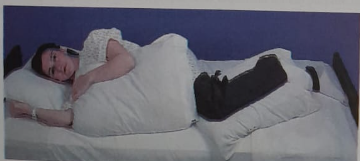
Sims’ Position:
The origin of the term. Named after one of the most popular physicians and gynecologists of the 19th century, James Marion Sims, this position is often used for rectal or vaginal examination, and treatments. Sims position is also one of the traditional methods for carrying out childbirth.
A position in which the patient lies on the side with the knee and thigh drawn upward toward the chest. The chest and abdomen are allowed to fall forward.
Purpose:
Sims’ is the position of choice for administering enemas or conducting rectalexaminations. Also called semiprone side position.
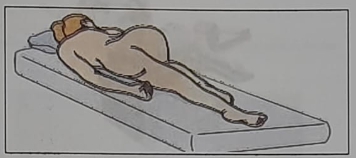
Fowlers and Semi-Fowler’s Position:
In low Fowler’s or semi-Fowler’s position, the head and trunk are raised to 15 to 45 degrees, in high Fowler’s, the head and trunk are raised 90 degrees.
The sitting or modified-sitting position, also known as Fowler or Semi-Fowler, or Beach chair,
Purpose:
- To obtain good drainage in the pelvis.
- To localize infection in the pelvis and prevent it’s spread to the peritoneum.
- To prevent strain of abdominal muscles.
- To facilitate breathing in patients with cardiac or respiratory embarrassment fur post-operative nasal cases and/or thyroidectomy cases.
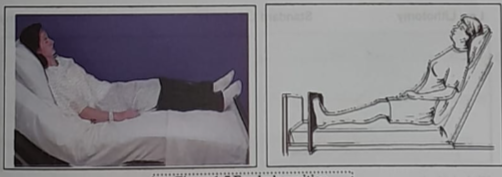
Lithotomy position:
In this position the body is lying in a supine with hips and knees fully extended. The feet are strapped in position to support the flexed knees and hips. Place the patient on her back across bed with the buttocks slightly beyond the edge of the mattress, then flex knees over the abdomen and separate the knees. Support the knees by means of long sheet folded diagonally and passed under the knees and around the neck.
Purpose:
- Vaginal and rectal examination.
- Operative procedures on the vagina, rectum and perineum.
- Deliveries and operative deliveries
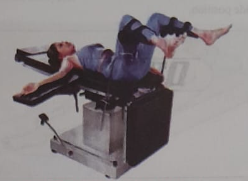
In the lithotomy position, the patient’s legs may be placed in one of five lithotomy positions depending on how high the legs and pelvis must be elevated for the procedure:
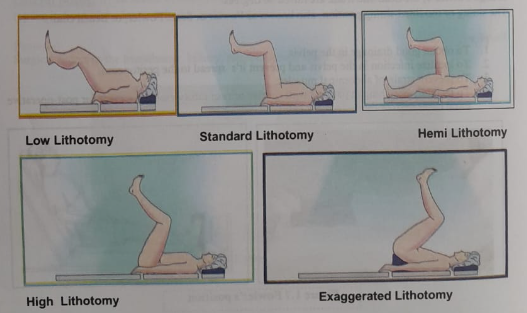
Knee-Chest or Genu-Pectoral:
Place patient in the prone position, then assist her to kneel so that her weight rests on her chest and knees. Turn head to one side and flex her arms at the elbows extending, then to the bed in front of her. Be sure the thighs are perpendicular to the level of the head. Watch pulse and general condition of the patient.
Purpose:
- To obtain better exposure of the vagina, cervix, and rectum.
- To examine the bladder.
- To help correct retroversion of the uterus.
- To administer caudal and sacral anesthesia.
- Vaginal and rectal examinations.
- Operative procedures on the vagina, rectum and perineum.

References:
Jane C. Rothrock (2003).. Alexander’s care of the patient in surgery (12 ed.). Mosby. pp. 159-184. ISBN 0- 323-01622-7.
“Surgical Technology for the Surgical Technologist (2 ed.). Delmar Learning. 2004. pp. 180-189. ISBN 1- 4018-3848-0Jump up to:ab
Lillian Sholtis Brunner (1986), The Lippincott: Manual of Nursing Practice (4 ed.). J. B. Lippincott Company. p. 54. ISBN 0-397-54499-5.
Read more:
